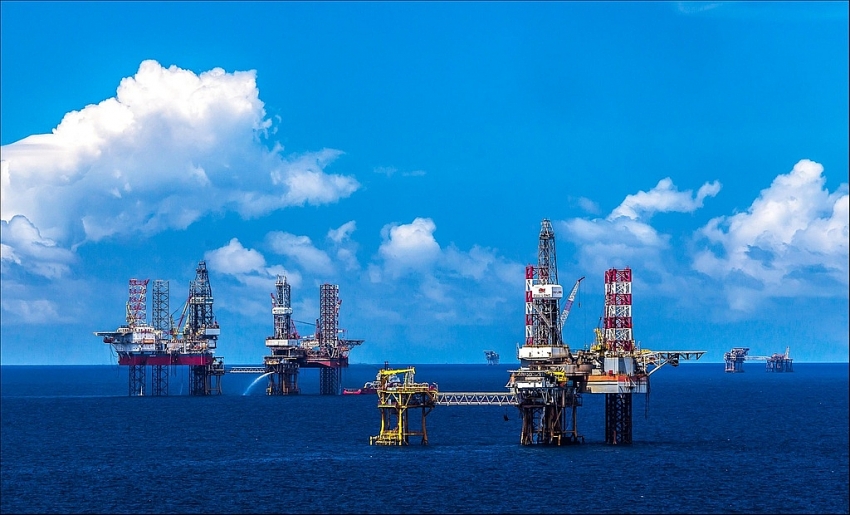PetroVietnam rolls out measures to cope with COVID-19 and oil prices
On March 11, 2020, PetroVietnam starts implementing Directive No.1151/CT-DKVN on the implementation of urgent tasks and solutions to cope with the dual effects of the COVID-19 epidemic and falling oil prices.
Facing the complicated situation of the COVID-19 epidemic and the fluctuations of the oil market, PetroVietnam’s management board had issued Directive 1151 to require the entire group’s staff and its affiliates to actively capture and update market information on supply and demand and the price of crude oil and petroleum products in order to build up specific plans and operating scenarios to fit any turn of events.
 |
| Oil exploitation operatiosn at the Bach Ho (White Tiger) Oil Field |
Coping with the sharp decline of oil prices since March 9, PetroVietnam is preparing a short-term plan for a long-term reduction in price, with scenarios for different price levels ($30, $40, $45, and $50 per barrel).
Subsidiaries and affiliates of PetroVietnam were assigned to compile scenarios and detailed solutions, even for the worst case scenario of prices crashing further.
The group will also focus on business activities while cutting off meetings and conferences, cutting costs and saving expenses by applying new technologies and improving labour efficiency. Especially, the group has compiled a set of solutions to prevent COVID-19 from spreading to oil fields and manufacturing sites.
2020 is the fifth year that PetroVietnam implemented the Vietnam Oil and Gas Industry Development Strategy to 2025 with orientation to 2035.
In January, PetroVietnam reported having surpassed many of its monthly targets, including revenue and state budget contributions. Its total revenue reached VND66.3 trillion ($2.88 billion), up 16.2 per cent against the monthly target, while contribution to the state budget hit VND8.3 trillion ($360.87 million), exceeding the goal by 17 per cent.
Meanwhile, PetroVietnam’s oil and gas exploitation increased 8.5 per cent against the monthly plan. It produced 147,300 tonnes of fertiliser and more than 1.2 million tonnes of fuel, surpassing the targets by 2.5 and 5.3 per cent, respectively.
What the stars mean:
★ Poor ★ ★ Promising ★★★ Good ★★★★ Very good ★★★★★ Exceptional
Related Contents
Latest News
More News
- Businesses ramp up production as year-end orders surge (December 30, 2025 | 10:05)
- Vietjet chairwoman awarded Labour Hero title (December 29, 2025 | 13:06)
- How to unlock ESG value through green innovation (December 29, 2025 | 10:03)
- AI reshapes media and advertising industry (December 29, 2025 | 08:33)
- FPT and GELEX sign deal to develop blockchain tech for global markets (December 29, 2025 | 08:29)
- Vietnam’s GDP forecast to grow by 9 per cent in 2026 (December 29, 2025 | 08:29)
- Women entrepreneurs are key to Vietnam’s economic growth (December 29, 2025 | 08:00)
- Vietnam's top 500 value-creating enterprises announced (December 27, 2025 | 08:00)
- The PAN Group shaping a better future with ESG strategy (December 26, 2025 | 09:00)
- Masan Consumer officially lists on HSX, marking the next phase of value creation (December 25, 2025 | 13:20)

 Tag:
Tag:
























 Mobile Version
Mobile Version